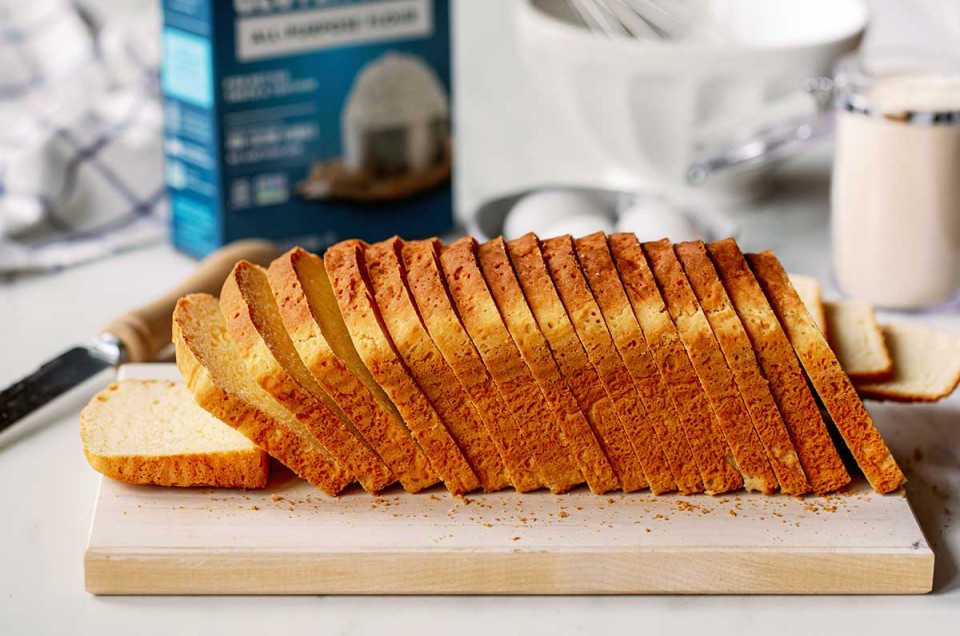


The landscape of gluten-free yeast baking has changed drastically over the last few years, leaving bakers better off in some ways and more confused in others. You no longer have to hand-blend eight different flours and starches to bake a loaf of bread. Phew! But now you need to select the right gluten-free flour to use in your recipe, especially when baking with yeast.
Why is gluten-free yeast baking extra tricky? Because gluten is key to the structure of yeast bread.
In dough made with conventional wheat flour, gluten captures carbon dioxide given off by yeast — which makes the dough rise. Without gluten, something else must create an expandable yet strong structure that enables bread to rise — which is essential for a great loaf of bread.
Don’t fret! We’ve figured out how to make the very best gluten-free bread and other yeasted baked goods.
The secret ingredient? Our Gluten-Free All-Purpose Flour. It’s specifically formulated to make tender sandwich bread, airy pizza crust, and other products including yeast. It’s the choice to reach for when you’re doing any kind of gluten-free yeast baking.
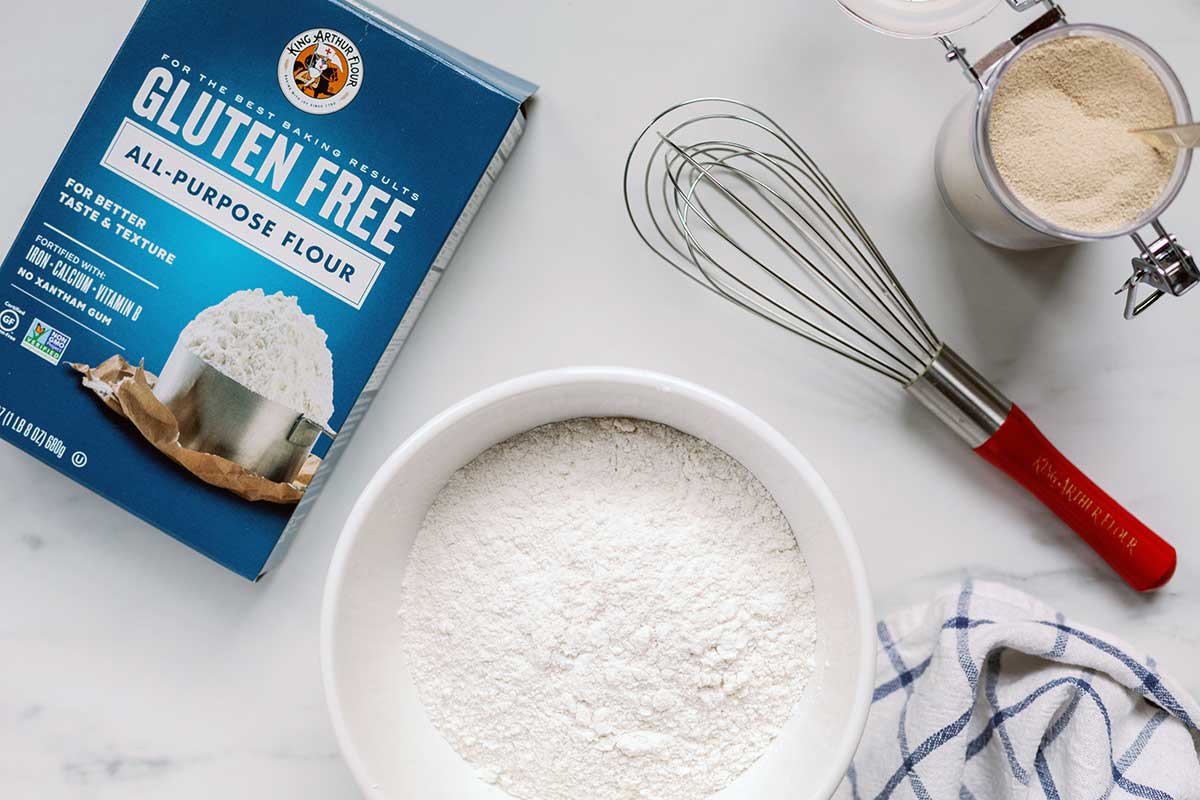
Let’s learn what makes Gluten-Free All-Purpose Flour special and how to make it shine in your gluten-free yeast baking at home.
You may have met Frank Tegethoff in our article about flour slicking. If you’re thinking, What the heck is flour slicking, you can find the answer in our blog post: Meet Frank, King Arthur’s Top Flour Cop.
Frank, a member of our Innovation Team, works with conventional wheat flour — all-purpose flour, bread flour, and the like — in our test kitchen. But he also gets his hands in gluten-free flour quite regularly.
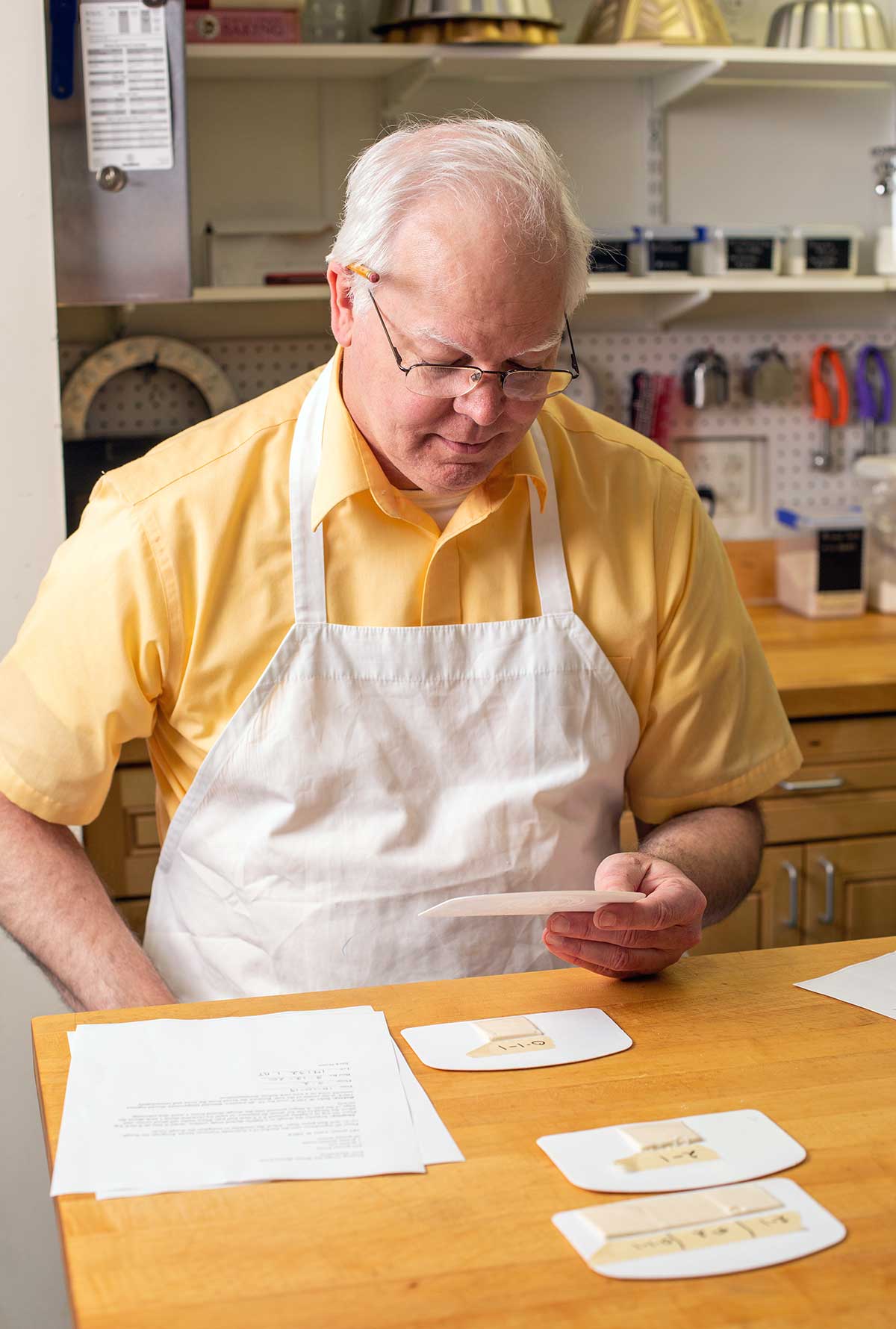
As an expert on all things flour, we turn to Frank to reinforce the facts (and bust any myths) about our Gluten-Free All-Purpose Flour and how it performs in gluten-free yeast baking.
Let’s cut right to the big question: Why is our Gluten-Free All-Purpose Flour the best choice for yeast baking? Is it because our Gluten-Free All-Purpose Flour doesn't contain xanthan gum — which means the amount of xanthan gum you add in any particular recipe is up to you? (For those of you new to gluten-free baking, xanthan gum is a stabilizer that lends structure to gluten-free baked goods.)
Frank confirms that yes, that’s part of why this is the go-to flour for yeast baking. The fact that our Gluten-Free All-Purpose Flour does NOT include xanthan gum is just what fastidious bakers want. This allows you to add your own xanthan gum, giving you more control over the final product.
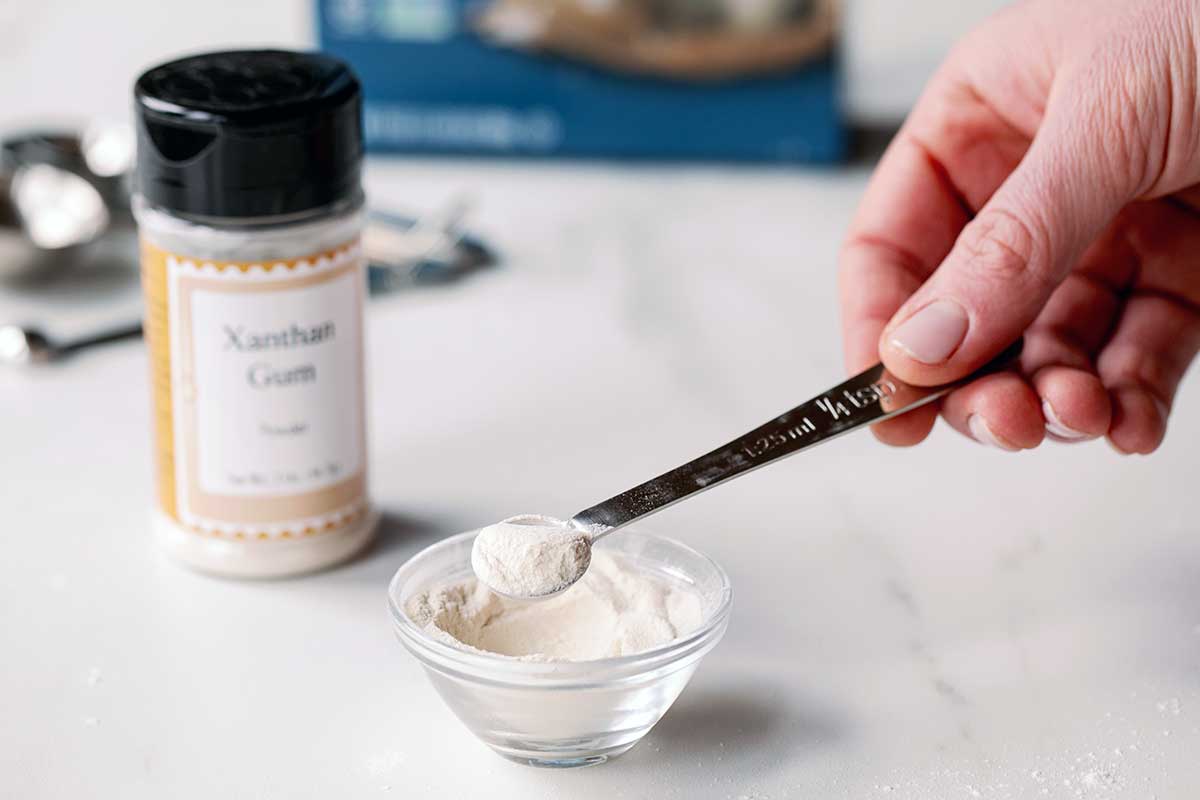
“Different baked goods require varying amounts of xanthan gum,” explains Frank. Bread needs a higher ratio of a stabilizer (like xanthan gum) to flour than muffins, cake, or cookies. “The additional xanthan gum bulks up the structure of gluten-free yeasted dough,” says Frank. “It needs to be able to re-form after bulk fermentation.”
Frank’s referring to the two rises that bread dough typically goes through. The additional xanthan gum makes gluten-free dough slightly stretchy and allows it to capture carbon dioxide bubbles during bulk fermentation (the initial rise).
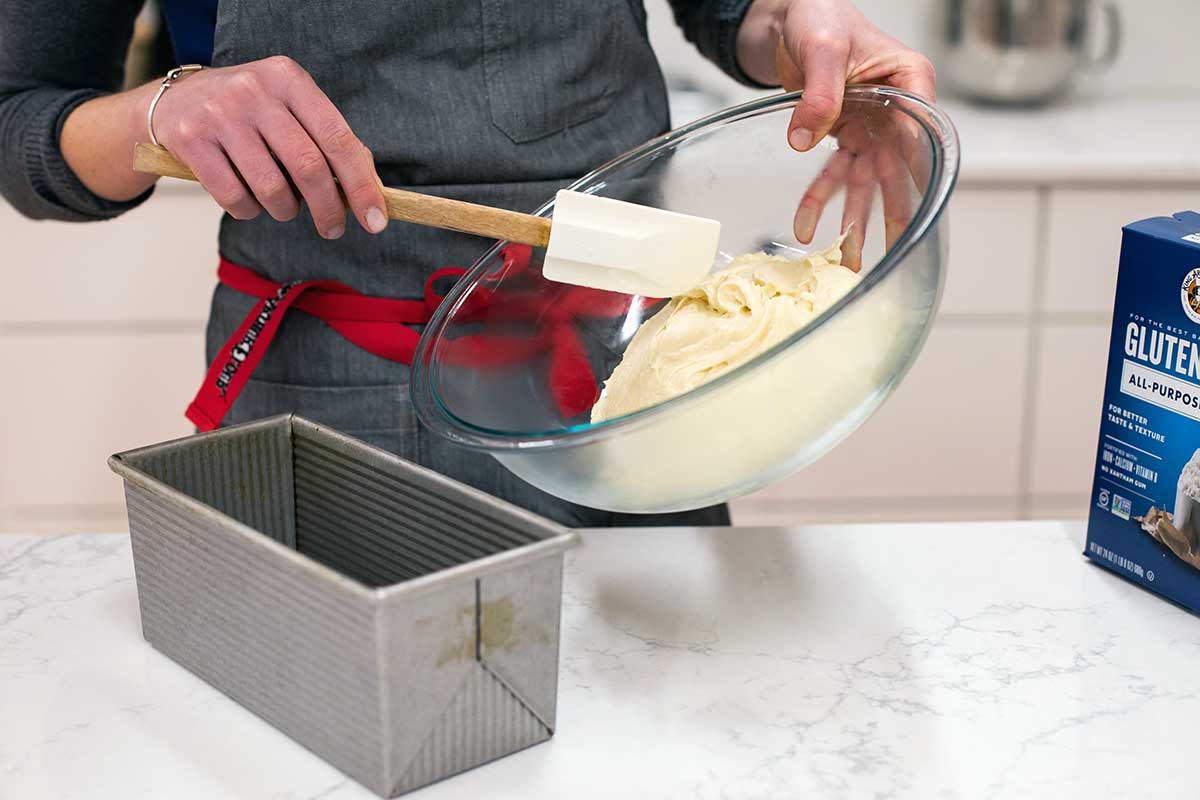
Once the dough is deflated and transferred to a bread pan, the xanthan structure breaks down. If you use a gluten-free flour with the xanthan gum already added, there may not be enough stabilizer to give the dough strength for a second rise. This leaves you with dense, low-rising bread.
The ability to control the amount of added xanthan gum isn’t the only thing that makes our Gluten-Free All-Purpose Flour ideal for yeast baking.
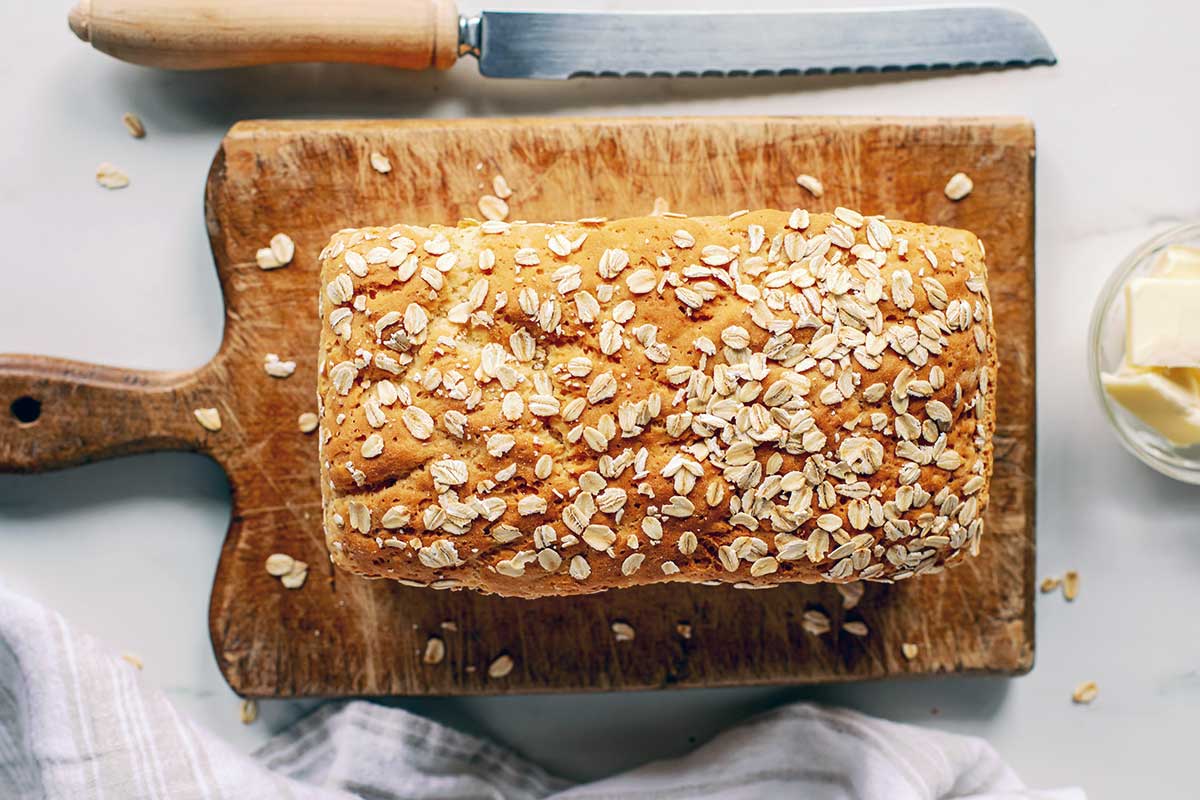
Frank tells me that right from the beginning, this flour was designed to be a multi-purpose flour. The Innovation Team set out to create a gluten-free flour that would make delightful sandwich bread as well as towering layer cakes (and more).
To ensure the best texture in all gluten-free baking, our Gluten-Free All-Purpose Flour is made from refined starches like white rice flour, tapioca starch, and potato starch. There’s none of the grittiness or heaviness that can come from unrefined flours. A bonus is the neutral flavor profile that accompanies these starches. “It’s very adaptable. It doesn’t overshadow the flavors you want to put in it,” says Frank. (Or on it either!)
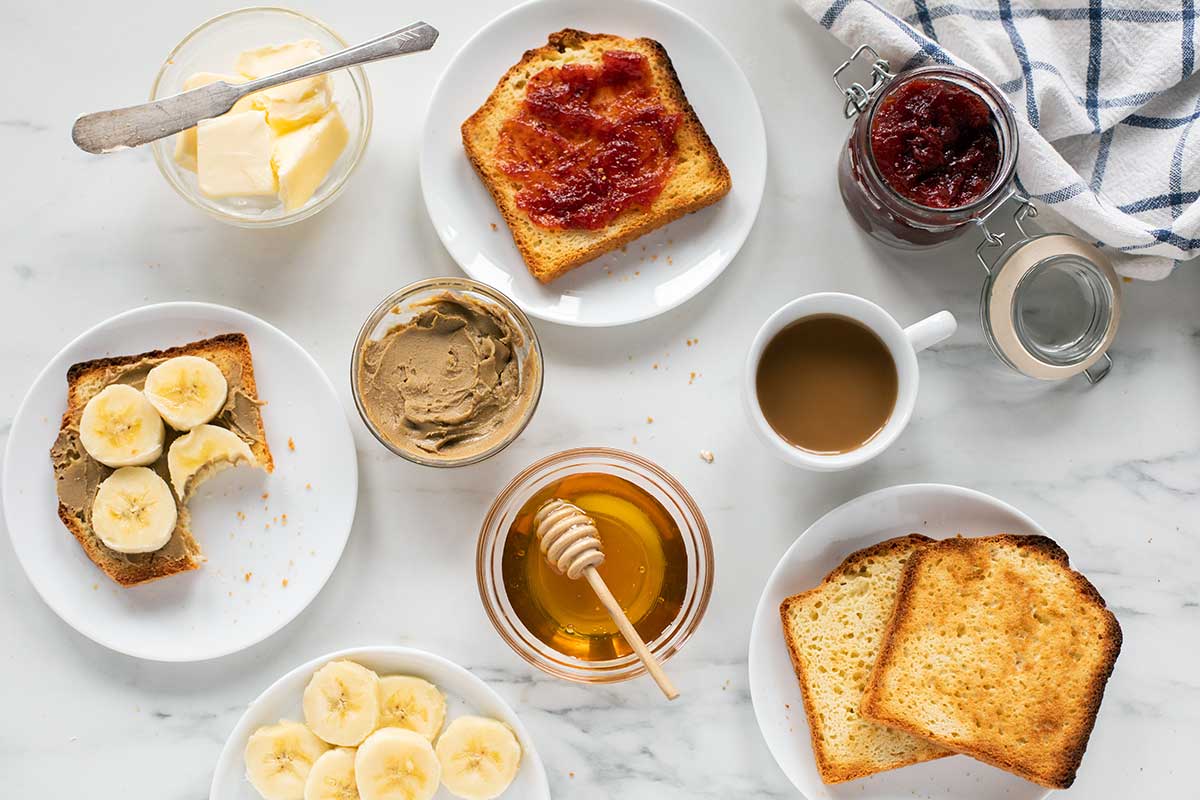
These qualities are different from many gluten-free flours on the market, which often use a whole grain like sorghum as the primary ingredient. Whole grains tend to have stronger flavor in general, ranging from earthy to astringent. Aside from flavor, it’s also difficult to achieve the same tender texture (which you’re often looking for in sandwich bread) with unrefined flour.
To recap, Gluten-Free All-Purpose Flour is ideal for yeast baking because you can control the amount of xanthan gum in your recipe, and the blend of refined starches offers a wide range of options, texture-wise.
So what’s the best way to put this flour to use? Can it stand in as a substitute for wheat flour?
Our Gluten-Free All-Purpose Flour can be used in any recipe that calls for gluten-free flour. Most recipes will also call for a stabilizer like xanthan gum. (We have a selection of recipes showcasing this flour on our website if you’re looking for a place to start.)
Frank cautions against trying to use Gluten-Free All-Purpose Flour as a substitute for the flour in standard recipes, even if you add xanthan gum. He says, “The hydration of gluten-free recipes is totally different based on what you’re baking, plus you usually need extra eggs and fat, too.”
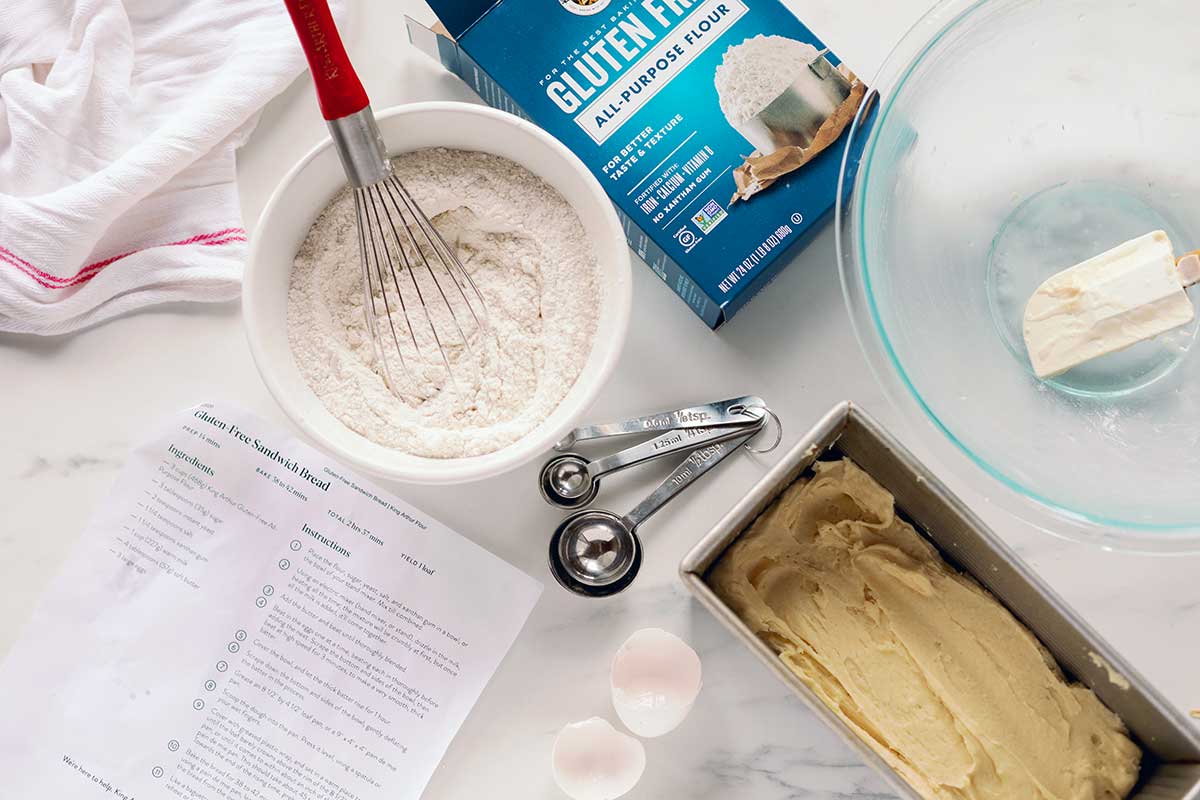
Take Frank’s advice: Unless you’re looking to embark on a trial-and-error experience, use our Gluten-Free All-Purpose Flour only in recipes that call for gluten-free flour.
If you’re looking to replace the all-purpose flour in a conventional, non-yeasted recipe, you can use our Gluten-Free Measure for Measure Flour as a 1:1 replacement. It can be used to make cookies, cakes, muffins, and other non-yeasted recipes gluten-free. The only ingredient change that’s required is a simple swap of the flours. (It’s truly amazing.)
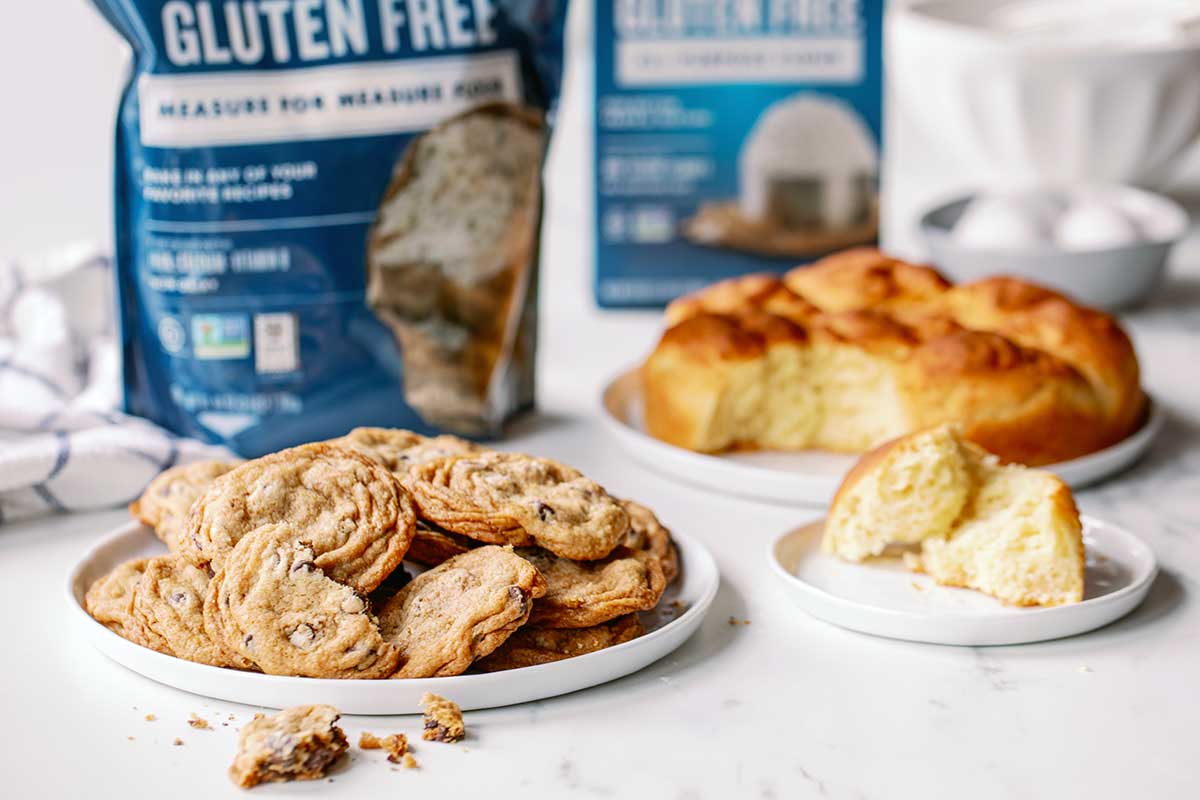
Gluten-Free All-Purpose Flour, on the other hand, is formulated specifically for recipes designed to be gluten-free. If you want tender, high-rising yeast bread, choose Gluten-Free All-Purpose Flour and use it in one of our gluten-free bread recipes. Frank loves our Gluten-Free Sandwich Bread and Gluten-Free Dinner Rolls (above, right). As a veteran of King Arthur Flour’s test kitchen team, you can trust Frank’s recommendations!
Don’t let the plethora of choices in the gluten-free flour category leave you feeling overwhelmed. Our Gluten-Free All-Purpose Flour will work in any recipe that calls for gluten-free flour and an added stabilizer (e.g. xanthan gum), even yeasted breads.
Bottom line: When following a recipe that calls for yeast and an added stabilizer, choose Gluten-Free All-Purpose Flour to make high-rising, tender final products.
Give our Gluten-Free All-Purpose Flour a try in one of Frank’s favorite yeasted recipes (Gluten-Free Sandwich Bread or Dinner Rolls) or try my personal favorite: Gluten-Free Cinnamon Rolls. Let us know what you think by leaving a review of the recipes or sharing your thoughts in the comments, below.
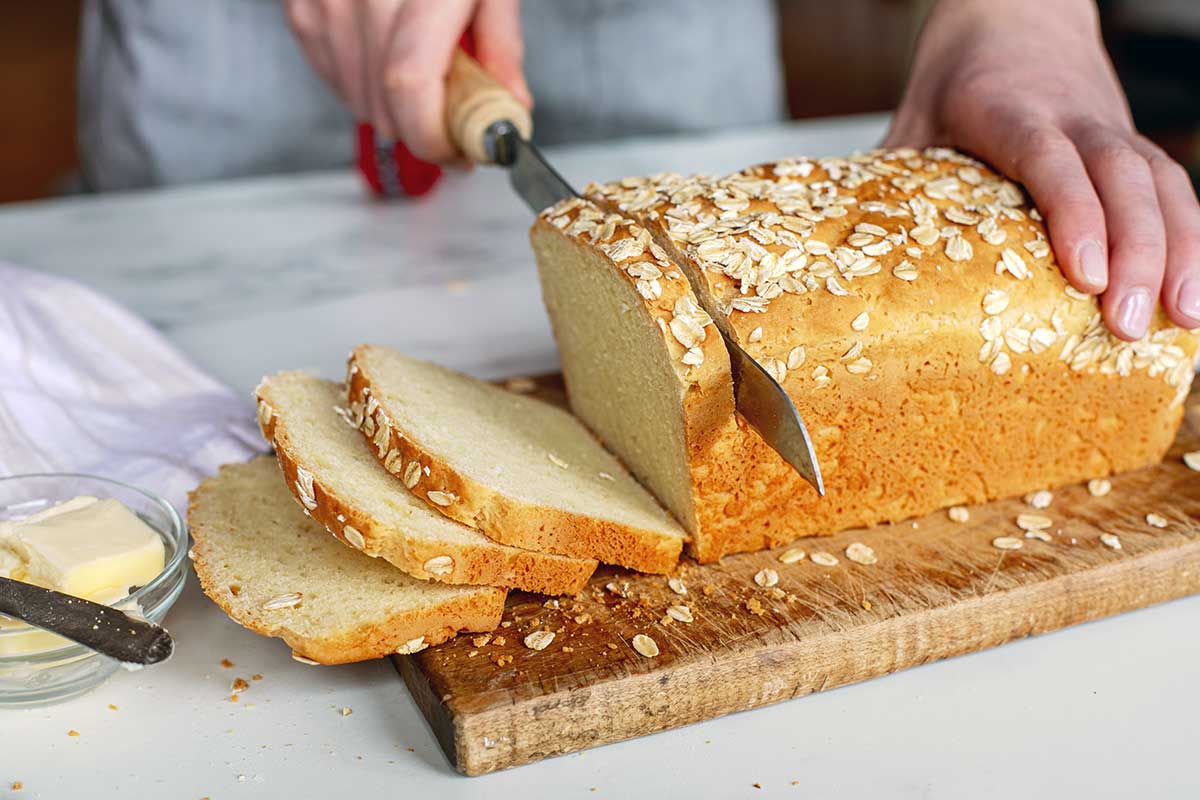
If you’re wondering which gluten-free flour to use when you’re not baking with yeast, our blog post, How to choose which gluten-free flour to use, walks you through the decision-making process.
Happy gluten-free baking!
Thanks to Frank Tegethoff for sharing his knowledge and passion for our Gluten-Free All-Purpose Flour.
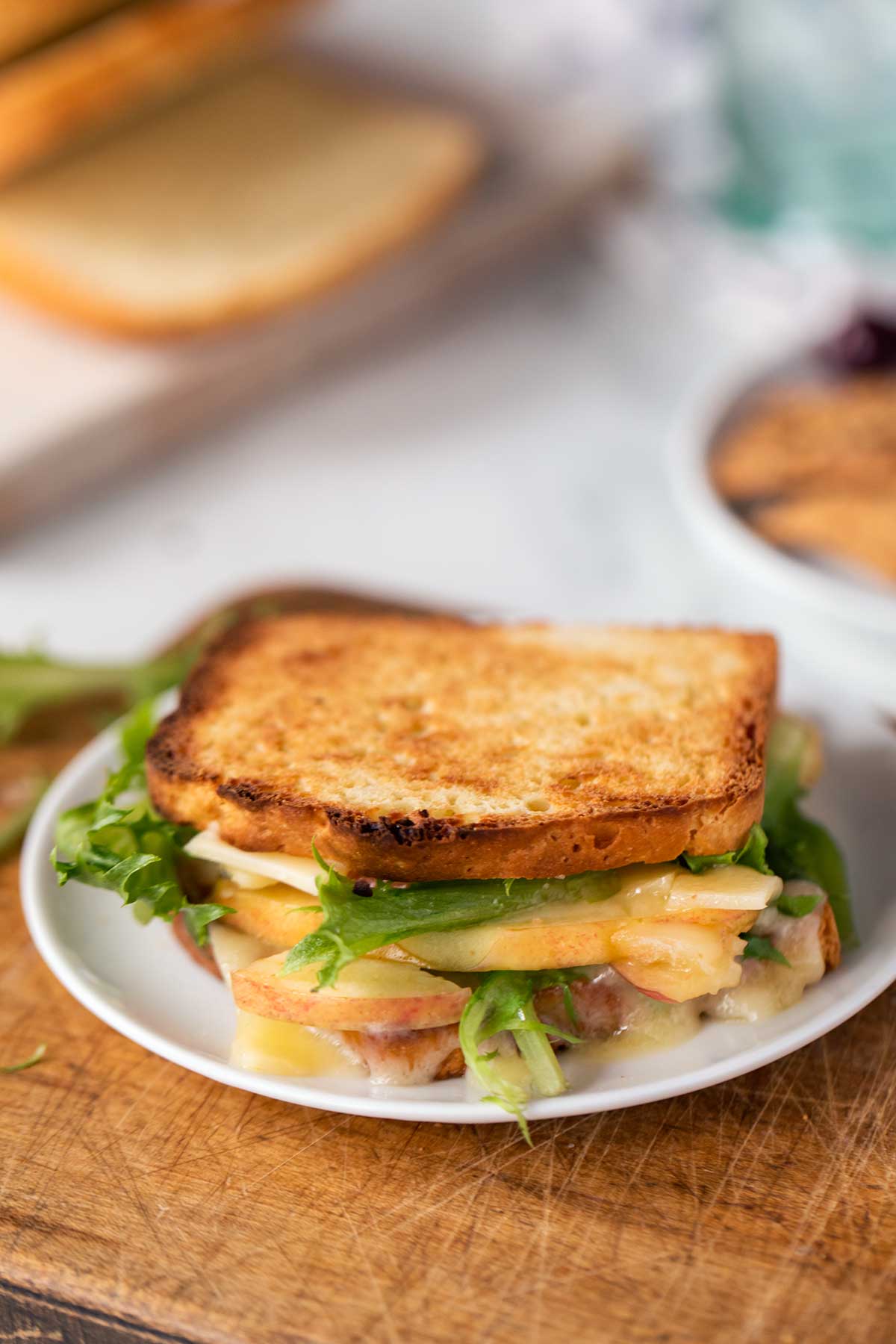
Thanks to Jenn Bakos for taking the photographs for this post.